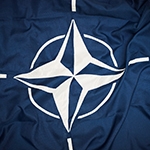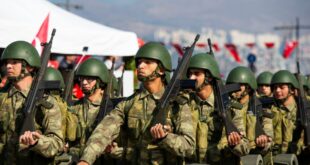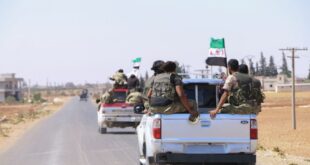Jeffrey Rathke
NATO’s strategy for transatlantic security, throughout the Cold War and to the present day, has been based on deterrence of potential adversaries through a mixture of both conventional and nuclear forces. A coherent and effective deterrence and defense policy depends on both aspects, especially at a time when Russia’s nuclear behavior is presenting significant challenges for NATO. Moscow exercises its nuclear forces heavily, focusing on the transition from a conventional to a nuclear contingency. Its evolved nuclear doctrine, combined with increasingly intimidating rhetoric, creates concerns that Russia might lower the threshold for using nuclear weapons. Moscow’s likely violation of the Intermediate-Range Nuclear Forces (INF) Treaty puts in jeopardy the stabilizing factor of U.S.-Russian arms control efforts. All these issues raise serious questions and require renewed attention to the nuclear component of NATO’s deterrent. NATO should not try to mirror Russia’s increasingly irresponsible nuclear behavior. Instead, it is time for NATO to develop a clearer nuclear declaratory policy to complement the steps underway to strengthen NATO’s conventional forces.
Since the annexation of Crimea and deployment of Russian forces in eastern Ukraine in 2014, NATO has rediscovered deterrence, actively reviewing and beginning to strengthen its defense posture to dissuade Russia from challenging NATO’s territorial integrity or attempting to coerce a NATO ally. The concurrent public recognition of these challenges has been an important factor in strengthening national responses. Yet this effort has so far centered mainly on redressing the conventional imbalance through a combination of increased forward forces and expanded NATO capacity for reinforcement of vulnerable allies in places where Russia has a local conventional advantage, for example in Poland or the Baltic countries.
Maintaining the military capacity either to deny Russia territorial gains or to impose a significant military cost to any aggression is critical to deterring Russian adventurism against NATO territory and providing NATO with more viable conventional response options than it currently possesses, were Russia to instigate a local conflict.
But deterrence is not a one-way street, and conventional deterrence itself has limitations. The effect of a stronger NATO conventional defense posture is limited if Russia believes, for example, that it may have a winning strategy at hand. In addition, to strive for parity in the balance between NATO and Russian conventional forces on the borders of the Baltic States would be as unrealistic and costly as it would be unnecessary and potentially escalatory. Hence the need to consider NATO’s nuclear policy as part of the public deterrence debate.
The Ukraine crisis has demonstrated that Russia sees its nuclear forces as a tool in pursuing its political objectives, which it uses in statements to intimidate neighbors and NATO members about Russia’s nuclear assets, by mobilizing or threatening to mobilize dual-capable delivery platforms such as the Iskander short-range ballistic missile near NATO territory (e.g., Kaliningrad and Crimea), by trying to delegitimize NATO’s nuclear sharing arrangements, or through direct or implied nuclear threats against specific countries. Russia’s military exercises often include simulated escalation from conventional to nuclear weapons, suggesting that Russia envisions and trains for a continuum of military escalation that includes nuclear employment. NATO also conducts nuclear exercises of course, but those are not linked to NATO’s conventional exercises and do not practice the transition from conventional to nuclear conflict.
It is difficult to determine with certainty where Russia would set its threshold for employing nuclear weapons in a conflict with NATO. Its exercises that simulate escalation to nuclear strikes against NATO capitals could essentially be a bluff—psychological manipulation aimed at weakening NATO’s determination and unity to resist Russian coercion; NATO’s consensus-based decisionmaking could tempt Russia in that direction. But taken together, these factors engender concern that Russia stands ready to lower the nuclear threshold and use or threaten to use nuclear weapons to support its pursuit of aggressive objectives, notwithstanding the 2014 Russian Military Doctrine’s position that nuclear weapons would only be used in response to a nuclear attack on Russia or a conventional attack that threatened Russia’s very existence as a state. (For an example of a scenario in which Russia could act accordingly, Iskander Rehman’s “Radioactive in Riga” in War on the Rocks is a good place to start.)
Any discussion of NATO’s nuclear policy must be conducted in light of the most likely adversary’s policy and posture. The nuclear challenge posed by Russia is primarily political, as it is less likely to be used to destroy NATO forces in the field than as a threat intended to raise the stakes and divide NATO allies, weakening their cohesion and determination to respond to Russian aggression. The overriding political objective for NATO, then, is to convince Russia (or any conceivable future nuclear adversary) of the alliance’s determination to respond to any contingency, including a nuclear one, in a united fashion.
How should NATO respond to this situation? One option is to integrate existing nuclear weapons (or even new systems) increasingly into NATO’s doctrine and exercises. This would essentially mimic Russia’s putative conventional-nuclear continuum, and critics would warn of a “new arms race in Europe.” However, the idea that nuclear weapons should be part of a graduated, unified NATO escalation ladder and that the rungs should be elaborated (and debated extensively within the alliance’s military and civilian fora) by NATO allies suggests that NATO’s approach would be to respond in kind to every threatening action by Russia, which would yield Russia greater control over the escalatory path in a crisis.
It could also encourage a potential adversary to test NATO’s resolve, raising the stakes for the alliance. In addition, it carries political risks, because a revision of NATO’s nuclear doctrine would be politically complicated and could raise fears in NATO publics (especially in countries where U.S. nuclear weapons are based) that the prospect of NATO contemplating use of nuclear weapons is coming closer to reality, after more than two decades in which Europe has lived without threat of becoming a nuclear battlefield.
Rather than copying Russia, NATO must remain a responsible nuclear actor. As the July 2016 Warsaw Summit nears, NATO should first of all adapt its declaratory policy. NATO has become much more circumspect over the years regarding the role it sees for nuclear weapons in the alliance’s defense and deterrence posture, to the point where public strategic NATO documents such as the 2010 Strategic Concept or the 2012 Deterrence and Defense Posture Review (DDPR) provide no meaningful statement to alliance publics or warning to a potential adversary about NATO’s resolve to resist nuclear coercion. Indeed, those documents appear in some respects to have been overtaken by events, particularly Russia’s intervention in Ukraine and its military modernization. This may raise doubts about the conclusion in the 2012 DDPR that “in the current circumstances, the existing mix of capabilities and the plans for their development are sound.”
But reopening NATO’s strategic documents is both unnecessary and politically unrealistic. Unrealistic because the U.S. administration, as well as key European allies like France or Germany, are likely to be skeptical about the value of such an enterprise and unwilling to trap the alliance in never-ending internal debates about the characterization of NATO’s evolving relationship with Russia. The Obama administration is unlikely to invest its remaining time in office on rewriting the Strategic Concept or launching an effort that would be out of synch with President Obama’s “Global Zero” goal of reducing nuclear weapons. More importantly, it would also be unnecessary—restating the purpose of NATO’s nuclear deterrent and updating the policy for the current and foreseeable circumstances—could be done by NATO leaders through stronger language in a declaration at the Warsaw Summit about the role they see nuclear weapons playing in the alliance deterrence strategy.
A Warsaw Summit statement would begin by reiterating why nuclear weapons remain necessary for NATO. The idea is not new and was articulated in the 1999 Strategic Concept, “the Alliance’s conventional forces alone cannot ensure credible deterrence.” The purpose of NATO allies’ nuclear forces can be more clearly stated, as reflected in the 1991 and 1999 Strategic Concepts: “the fundamental purpose of the nuclear forces of the Allies is political: to preserve peace and prevent coercion and any kind of war.” While the precise role that nuclear weapons might play is not detailed (and should not be), its value is in raising the risks to an aggressor: “They [nuclear weapons] will continue to fulfil an essential role by ensuring uncertainty in the mind of any aggressor about the nature of the Allies’ response to military aggression. They demonstrate that aggression of any kind is not a rational option.”
Those positions reflected at the time a legacy of the Cold War, and the Soviet Union and Warsaw Pact’s superiority in conventional forces, which is why NATO never adopted a non-first-use policy, relying instead on nuclear weapons to deter the Soviet Union from overrunning Western Europe. The challenge now is different: to deter a potential Russian strategy of limited conventional aggression backed up by nuclear blackmail. The language chosen should signal this focus and thus clarify that NATO’s intent is not to mirror Russia but to warn that nuclear use or coercion would be unacceptably risky; Russia faces no existential threats, and breaking the 70-year nuclear taboo, or even using it as a limited or tactical instrument for intimidation or coercion, would involve incalculable consequences.
Would such a clear warning amount to a repudiation of “Global Zero,” a policy articulated by President Obama in 2009 and warmly welcomed by many NATO members? Some allies might fear so. But a more explicit declaratory policy adapting this language to today’s circumstances would not entail new systems or reverse the steps made bilaterally by the United States and Russia through the New START Treaty or other initiatives to reduce numbers of nuclear weapons; it would acknowledge that the world without nuclear weapons that the United States and NATO seek is not the world that exists today, highlighting instead the risks and dangers of Russia’s nuclear saber rattling.
NATO has demonstrated since the end of the Cold War that it stands ready to reduce its reliance on nuclear weapons. The 2010 Strategic Concept made a clear offer to discuss further reductions with Russia, especially tactical weapons, to which Russia has not responded. The 2011 New START Treaty also underscored U.S. willingness to further reduce its strategic nuclear weapons. NATO should continue to reiterate that interest, but a reduction of the risk of nuclear weapons being used depends on a willing partner, which Russia (in light of its reported INF violations in addition to its aggression in Ukraine) does not appear presently to be.
Over time, depending on Russia’s future policy and posture, a stronger declaratory policy might be complemented by additional steps related to the force and/or posture of allied nuclear forces or their readiness. But this is not required today, and it should not be foreordained, as it would depend on future developments.
What is needed at this stage from a practical standpoint is continued commitment by NATO members to participate in the nuclear mission, since broad support is key to its credibility, beyond the strategic arsenals of France, the United States, and the United Kingdom. Each NATO summit has stressed the importance of NATO allies participating in nuclear roles (for those countries not hosting U.S. nuclear weapons, this involves among other things filling tactical air roles that would support nuclear missions). The deterrent must remain effective, including in the context of an increasing Russian anti-access/area denial challenge, which means continuing the modernization of the force and the platforms it depends on. A more active program to exercise nuclear capabilities, still separated from conventional exercises, would demonstrate concrete action by allies to deepen the credibility of this assurance. Greater participation of nonnuclear allies in such exercises would do so too.
A position of greater clarity should underscore NATO’s determination to preserve peace and prevent coercion and, therefore, bolster an effective deterrence policy. It may also raise Russia’s readiness for constructive dialogue, including on nuclear issues, a prospect all NATO allies would welcome. Dialogue among NATO, its member states, and Russia seems more necessary than it has in a long time. Reinforcing the credibility of NATO’s deterrence, in which all allies have a role to play, rather than playing to Russia’s escalation-dominance strengths, is a path to greater strategic stability in Europe.
 Geostrategic Media Political Commentary, Analysis, Security, Defense
Geostrategic Media Political Commentary, Analysis, Security, Defense





